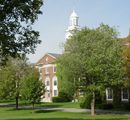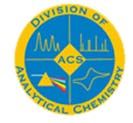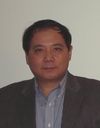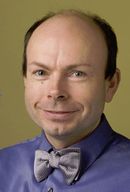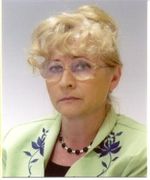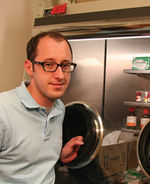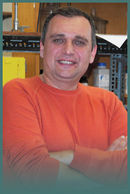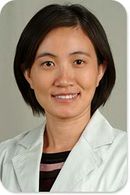Difference between revisions of "Nanotechnology: Emerging analytical/bioanalytical & medical applications"
(fmt, add template) |
(subst) |
||
| (25 intermediate revisions by 2 users not shown) | |||
| Line 1: | Line 1: | ||
{{MainNavigation}} | {{MainNavigation}} | ||
| + | {| align="right" | ||
| + | | __TOC__ | ||
| + | |} | ||
| + | The goal of this symposium is to provide an interdisciplinary forum for scientific and technical exchange to advance the research of nanotechnology in analytical, bioanalytical, and medical applications. A common theme for the emerging interests in nanotechnology is the exploration of the unique electrical, optical, l properties of materials at nanoscale. In addition to discussing the latest experimental and theoretical approaches to probing various nanoscale interfacial phenomena, the symposium will also address the challenges and opportunities in all aspects of innovative applications in analytical, bioanalytical, medical, and other interdisciplinary research fields. | ||
| − | The | + | The proposed topics include, but will not be limited to development of nanostructured or nanocomposite materials for constructing sensors, biosensors, medical diagnostics, improvement of chemical and biological detection by manipulating nanoscale size, shape, composition, and interfacial properties, synthesis of multifunctional nanoparticles and nanostructures for enhancement of sensing or detection performance, development of techniques or methodologies for characterizing the nanostructured materials, and experimental and theoretical investigations of nanoscale phenomena responsible for new or improved analytical, bioanalytical, and medical capabilities. |
| + | |||
| + | ==Sponsors== | ||
| + | [[File:ANYL.jpg|133px|left|Sponsored by the [http://www.analyticalsciences.org/ ACS Analytical Division]]] This session is sponsored by the '''[http://www.analyticalsciences.org/ ACS Analytical Division]'''. Join the analytical division, and enjoy: | ||
| + | * -Connection with this community of analytical scientists and support of its work | ||
| + | * -Biannual newsletter | ||
| + | * -Access to members-only web services such as anticipated web broadcast of meeting content | ||
| + | * -Opportunity to take part in Division leadership | ||
| + | * -Opportunity for Nationally recognized awards | ||
| + | <div style="clear:left;"> | ||
| + | |||
| + | ==Session organizer: Prof. C-J. Zhong== | ||
| + | |||
| + | [[File:Zhong faculty.jpg|left|100px]] | ||
| − | + | '''[http://chemistry.binghamton.edu/ZHONG/zhong.htm Prof. Chuan-Jian Zhong]''' is a professor of Analytical and Materials Chemistry, Electrochemistry, Catalysis, and Nanotechnology at the State University of New York at Binghamton. | |
| + | <div style="clear:left;"> | ||
| + | |||
| + | ==Confirmed speakers== | ||
| + | *'''[http://www.clarkson.edu/physics/faculty_pages/sokolov.html Prof. Igor Sokolov]''', Professor in the Department of Physics, the Department of Chemistry and Biomolecular Science, and Director of Nanoengineering and Biotechnology Laboratories Center (NABLAB), NY Center for Advanced Material Processing (CAMP) , Clarkson University, Potsdam, NY 13699. "''Nanotechnology and Non-traditional Methods of Cancer Detection''" | ||
| + | |||
| + | *'''[http://www2.potsdam.edu/hepelmr/index.htm Prof. Maria R. Hepel]''', chair of the Dept. of Chemistry, SUNY Potsdam, and program chair for NERM 2010: "''Resonance Elastic Light Scaterring (RELS) Spectroscopy for Monitoring Biomolecule-Induced Gold Nanoparticle Assembly''." | ||
| + | |||
| + | *'''[http://www-che.syr.edu/faculty/maye.html Prof. Mathew Maye]''', Assistant Professor of Chemistry, Syracuse University: "''Quantum Dot based Sensing and Bioimaging''." | ||
| + | |||
| + | *'''[http://chemistry.binghamton.edu/DIMITROV/dimitrov.htm Prof. Nikolay Dimitrov]''', Associate Professor, Department of Chemistry, SUNY Binghamton. | ||
| + | |||
| + | *'''[http://www.wpi.edu/Academics/Depts/CHE/People/hsz.html Prof. Hong Susan Zhou]''', Assistant Professor, Life Science and Bioengineering Center, Worcester Polytechnic Institute, Worcester, MA. | ||
| + | |||
| + | *'''Dr. Jin Luo''', Department of Chemistry, SUNY Binghamton. | ||
| + | |||
| + | [[Category:Program content]] | ||
| + | {| class="wikitable" | ||
| + | |- | ||
| + | |<!--column1-->[[File:Sokolov2.jpg|thumb|130px|Dr. Sokolov]] | ||
| + | |<!--column2-->[[File:MH2-portret-Leszno.jpg|thumb|150px|Dr. Hepel]] | ||
| + | |<!--column3-->[[File:Maye.jpg|thumb|150px|Dr. Maye]] | ||
| + | |<!--column2-->[[File:Dimitrov.jpg|thumb|130px|Dr. Dimitrov]] | ||
| + | |<!--column2-->[[File:Zhou.jpg|130px|thumb|Dr. Zhou]] | ||
| + | |}<!--end wikitable--> | ||
| + | |||
| + | ==Program== | ||
| + | '''Thursday, June 3, 8:55 AM - 11:50 AM''' | ||
| + | |||
| + | '''Nanotechnology: Emerging analytical/bioanalytical & medical applications''' | ||
| + | |||
| + | ;Kellas 102 | ||
| + | '''Organizer/Presider: Chuanjian Zhong''' | ||
| + | |||
| + | 8:55 Introductory Remarks | ||
| + | |||
| + | 9:00 155 ''Quantum Dots for Sensing and Bioimaging''. '''Mathew M. Maye''', Hyunjoo Han, Joshua Zylstra and Corey Hine, Syracuse University | ||
| + | |||
| + | 9:30 156 ''Nanotechnology and Non-Traditional Methods of Cancer Detection''. '''Igor Sokolov'''1,2,3, Maxim E. Dokukin1, Ravi M. Gaikwad1, Nataliia V. Guz1 and Craig D. Woodworth4, (1)Clarkson University, (2)Clarkson University, (3)Clarkson | ||
| + | University, (4)Clarkson University | ||
| + | |||
| + | 10:00 157 ''Optical Biosensors That Exploit Plasmon Coupling in Noble Metal Nanoparticles Mediated by a Bioresponsive Hydrogel''. '''Ihor Tokarev''', Iryna Tokareva, Venkateshwarlu Gopishetty, Evgeny Katz and Sergiy Minko, Clarkson | ||
| + | University | ||
| − | + | 10:20 Intermission | |
| − | + | 10:30 158 ''Resonance Elastic Light Scattering (RELS) Spectroscopy for Monitoring Biomolecule-Induced Gold Nanoparticle Assembly''. '''Maria Hepel''' and Magdalena Stobiecka, State University of New York at Potsdam | |
| − | + | 10:50 159 ''Nanoporous Metal Substrates: Electrochemical Processing and Surface Area Measurements''. '''Nikolay Dimitrov'''1, Yihua Liu1 and Stoyan Bliznakov2, (1)Binghamton University-SUNY, (2)Brookhaven National Laboratory | |
| + | 11:20 160 ''Probing Interfacial Interactions of Bacteria on Nanoparticles and Substrates with Different Surface Properties''. '''Jin Luo''', Linyang Wang, Elizabeth Crew, Rameshwori Loukrakpam, Jun Yin and Chuan-Jian Zhong, State University of | ||
| + | New York at Binghamton | ||
| + | [[Category:Program content]] | ||
| + | '''Friday, June 4, 9:00 AM - 11:30 AM''' | ||
| + | '''Nanotechnology: Emerging Analytical/Bioanalytical & Medical Applications''' | ||
| + | ;Kellas 102 | ||
| + | '''Organizer/Presider: Chuanjian Zhong''' | ||
| + | 9:00 296 ''Gold Nanoparticle (AuNP) and Magnetic Nanoparticle (MNP) Based Biosensing''. '''Susan Zhou''' and Jianlong Wang, Worcester Polytechnic Institute | ||
| + | 9:30 297 ''Nanodispersions for In Vivo Removal of Overdosed Therapeutics and Biotoxins''. '''R. Partch'''1,2, E. Powell1, D. Shah3, M. Varshney3, D. Dennis4, T. Morey4, Y.-H. Lee5, D.-W. Lee2, R. Baney2 and J. Flint4, (1)Clarkson University, (2)University of Florida, (3)University of Florida, (4)University of Florida, (5)Kyungwon University | ||
| + | 10:00 Intermission | ||
| + | 10:10 ''Bio-analytical applications of ceria nanoparticles: concept design and development of advanced biosensors''. '''Silvana Andrescu'''. Clarkson University | ||
| + | 10:40 298 ''Long-Circulating Porous Silica Microparticles Visualized with MRI after Intraperitoneal and Intravenous Injection''. '''Jeremy L. Steinbacher''' and Christopher C. Landry, University of Vermont | ||
| + | 11:00 299 ''Nanoparticle-Regulated Chiral Recognition''. Stephanie Lim, Derrick Mott and '''Chuan-Jian Zhong''', State University of New York at Binghamton | ||
| − | + | 11:25 Concluding Remarks | |
| − | [[Category: | + | [[Category:Program content]] |
Latest revision as of 15:59, 11 June 2010
The goal of this symposium is to provide an interdisciplinary forum for scientific and technical exchange to advance the research of nanotechnology in analytical, bioanalytical, and medical applications. A common theme for the emerging interests in nanotechnology is the exploration of the unique electrical, optical, l properties of materials at nanoscale. In addition to discussing the latest experimental and theoretical approaches to probing various nanoscale interfacial phenomena, the symposium will also address the challenges and opportunities in all aspects of innovative applications in analytical, bioanalytical, medical, and other interdisciplinary research fields.
The proposed topics include, but will not be limited to development of nanostructured or nanocomposite materials for constructing sensors, biosensors, medical diagnostics, improvement of chemical and biological detection by manipulating nanoscale size, shape, composition, and interfacial properties, synthesis of multifunctional nanoparticles and nanostructures for enhancement of sensing or detection performance, development of techniques or methodologies for characterizing the nanostructured materials, and experimental and theoretical investigations of nanoscale phenomena responsible for new or improved analytical, bioanalytical, and medical capabilities.
Sponsors
This session is sponsored by the ACS Analytical Division. Join the analytical division, and enjoy:
- -Connection with this community of analytical scientists and support of its work
- -Biannual newsletter
- -Access to members-only web services such as anticipated web broadcast of meeting content
- -Opportunity to take part in Division leadership
- -Opportunity for Nationally recognized awards
Session organizer: Prof. C-J. Zhong
Prof. Chuan-Jian Zhong is a professor of Analytical and Materials Chemistry, Electrochemistry, Catalysis, and Nanotechnology at the State University of New York at Binghamton.
Confirmed speakers
- Prof. Igor Sokolov, Professor in the Department of Physics, the Department of Chemistry and Biomolecular Science, and Director of Nanoengineering and Biotechnology Laboratories Center (NABLAB), NY Center for Advanced Material Processing (CAMP) , Clarkson University, Potsdam, NY 13699. "Nanotechnology and Non-traditional Methods of Cancer Detection"
- Prof. Maria R. Hepel, chair of the Dept. of Chemistry, SUNY Potsdam, and program chair for NERM 2010: "Resonance Elastic Light Scaterring (RELS) Spectroscopy for Monitoring Biomolecule-Induced Gold Nanoparticle Assembly."
- Prof. Mathew Maye, Assistant Professor of Chemistry, Syracuse University: "Quantum Dot based Sensing and Bioimaging."
- Prof. Nikolay Dimitrov, Associate Professor, Department of Chemistry, SUNY Binghamton.
- Prof. Hong Susan Zhou, Assistant Professor, Life Science and Bioengineering Center, Worcester Polytechnic Institute, Worcester, MA.
- Dr. Jin Luo, Department of Chemistry, SUNY Binghamton.
Program
Thursday, June 3, 8:55 AM - 11:50 AM
Nanotechnology: Emerging analytical/bioanalytical & medical applications
- Kellas 102
Organizer/Presider: Chuanjian Zhong
8:55 Introductory Remarks
9:00 155 Quantum Dots for Sensing and Bioimaging. Mathew M. Maye, Hyunjoo Han, Joshua Zylstra and Corey Hine, Syracuse University
9:30 156 Nanotechnology and Non-Traditional Methods of Cancer Detection. Igor Sokolov1,2,3, Maxim E. Dokukin1, Ravi M. Gaikwad1, Nataliia V. Guz1 and Craig D. Woodworth4, (1)Clarkson University, (2)Clarkson University, (3)Clarkson University, (4)Clarkson University
10:00 157 Optical Biosensors That Exploit Plasmon Coupling in Noble Metal Nanoparticles Mediated by a Bioresponsive Hydrogel. Ihor Tokarev, Iryna Tokareva, Venkateshwarlu Gopishetty, Evgeny Katz and Sergiy Minko, Clarkson University
10:20 Intermission
10:30 158 Resonance Elastic Light Scattering (RELS) Spectroscopy for Monitoring Biomolecule-Induced Gold Nanoparticle Assembly. Maria Hepel and Magdalena Stobiecka, State University of New York at Potsdam
10:50 159 Nanoporous Metal Substrates: Electrochemical Processing and Surface Area Measurements. Nikolay Dimitrov1, Yihua Liu1 and Stoyan Bliznakov2, (1)Binghamton University-SUNY, (2)Brookhaven National Laboratory
11:20 160 Probing Interfacial Interactions of Bacteria on Nanoparticles and Substrates with Different Surface Properties. Jin Luo, Linyang Wang, Elizabeth Crew, Rameshwori Loukrakpam, Jun Yin and Chuan-Jian Zhong, State University of New York at Binghamton
Friday, June 4, 9:00 AM - 11:30 AM Nanotechnology: Emerging Analytical/Bioanalytical & Medical Applications
- Kellas 102
Organizer/Presider: Chuanjian Zhong
9:00 296 Gold Nanoparticle (AuNP) and Magnetic Nanoparticle (MNP) Based Biosensing. Susan Zhou and Jianlong Wang, Worcester Polytechnic Institute
9:30 297 Nanodispersions for In Vivo Removal of Overdosed Therapeutics and Biotoxins. R. Partch1,2, E. Powell1, D. Shah3, M. Varshney3, D. Dennis4, T. Morey4, Y.-H. Lee5, D.-W. Lee2, R. Baney2 and J. Flint4, (1)Clarkson University, (2)University of Florida, (3)University of Florida, (4)University of Florida, (5)Kyungwon University
10:00 Intermission
10:10 Bio-analytical applications of ceria nanoparticles: concept design and development of advanced biosensors. Silvana Andrescu. Clarkson University
10:40 298 Long-Circulating Porous Silica Microparticles Visualized with MRI after Intraperitoneal and Intravenous Injection. Jeremy L. Steinbacher and Christopher C. Landry, University of Vermont
11:00 299 Nanoparticle-Regulated Chiral Recognition. Stephanie Lim, Derrick Mott and Chuan-Jian Zhong, State University of New York at Binghamton
11:25 Concluding Remarks
